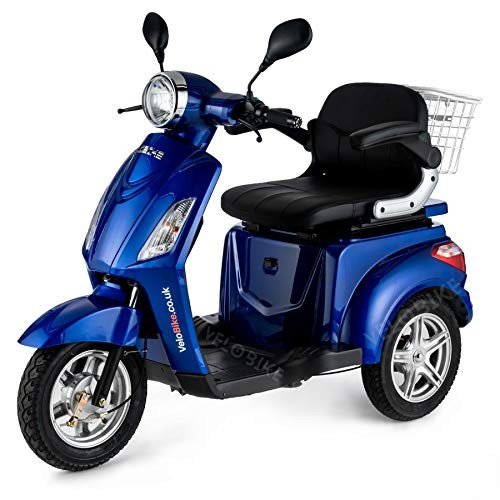5 Must-Know Practices For Scooter Mobility For Sale In 2024
Mobility Scooters: A Comprehensive Guide
Mobility scooters have ended up being an important mode of transportation for many individuals dealing with mobility challenges. This short article explores the various aspects of mobility scooters, including their types, benefits, functions, and a guide for potential buyers.
Understanding Mobility Scooters
Mobility scooters are electrically powered devices created for people with minimal mobility. They supply a method of transport for people who might have problem strolling but still wish to maintain their independence. They come in various styles and functions to deal with a wide variety of needs.
Types of Mobility Scooters
Mobility scooters can usually be classified into three main types:
Type
Description
Best For
Compact Scooters
These are small and lightweight, ideal for inside your home and short journeys.
Users with minimal storage space or those who travel often.
Mid-size Scooters
A balance between mobility and stability, ideal for both indoor and outside use.
Those who need to cover a variety of terrains.
Heavy-duty Scooters
Big and robust, created for rugged outdoor usage and heavier individuals.
Users needing additional weight capability or going off-road.
Key Features of Mobility Scooters
The choice of mobility scooter often depends on the features that align with specific needs. Here are a few of the crucial functions to think about:
Weight Capacity: Mobility scooters feature different weight limits. It is crucial to select a scooter that can sufficiently support the user's weight.
Variety: The range a scooter can take a trip on a single charge differs. Depending upon user requirements, one may choose scooters with a series of as much as 40 miles.
Speed: Most mobility scooters can reach speeds in between 4 to 8 miles per hour. Consider what new mobility scooters is comfortable and safe for the desired environment.
Turning Radius: A compact turning radius is important for indoor usage, enabling easier navigation in tight spaces.
Battery Type: The type of batteries used can impact the scooter's efficiency. Lead-acid and lithium-ion batteries are the most common.
Benefits of Using Mobility Scooters
The benefits of mobility scooters extend beyond simply transportation. Some crucial benefits include:
Independence: Users can navigate their environment without counting on caregivers, promoting independence and self-esteem.
Health Benefits: Using a scooter can motivate outside activity, causing physical and psychological health improvements by minimizing sensations of isolation.
Convenience: Scooters can easily be run in numerous environments, whether inside your home, in mall, or outdoors.
Important Considerations When Buying a Mobility Scooter
When buying a mobility scooter, numerous factors to consider can help guarantee that you select the best model:
Assess Individual Needs:
- Mobility level: Consider how much assistance the person will require.
- Variety of usage: Determine where the scooter will primarily be used (indoors, outdoors, on rough surfaces, etc).
Test Drive:
- Always test drive numerous models to find an ideal fit. Pay attention to convenience, ease of steering, and the scooter's responsiveness.
Review Safety Features:
- Look for scooters with appropriate security features like lights, indicators, and anti-tip styles.
Inspect Warranty and Service Options:
- A trustworthy guarantee and readily available service alternatives are essential for long-lasting usage.
FAQs about Mobility Scooters
**1. How fast do mobility scooters go?Mobility scooters typically have speeds ranging from 4 to 8 mph, with most designed for safety rather than high-speed travel. 2. Are there weight limitations on mobility scooters?Yes, mobility
scooters feature specific weight limits, often ranging from
250 lbs to over 500 lbs, depending upon the model. 3. Can mobility scooters be used indoors?Certain models, especially compact scooters, are specifically developed for
**indoor use and are simpler to navigate in tight spaces. 4. How typically do the batteries need to be replaced?Battery life can vary based upon use, but typically, with correct care, batteries might last between 1 to 3 years before requiring replacement
**. 5. Are mobility scooters covered by insurance?Coverage can vary, however some insurance plans, consisting of Medicare and Medicaid, might cover part of the cost. It's advised to talk to private insurance coverage service providers. Mobility scooters work as a
important tool for lots of people, allowing them to preserve
their freedom and independence. By understanding the various types and functions of mobility scooters, people can make informed decisions tailored to their particular needs.
Whether used for errands, interacting socially, or leisurely activities, mobility scooters can improve the lifestyle for those with mobility constraints. Purchasing a mobility scooter is a choice that can significantly affect an individual's life. Therefore, people ought to thoroughly examine their options and select a design that best lines up with their way of life and mobility requirements
.  ******
******